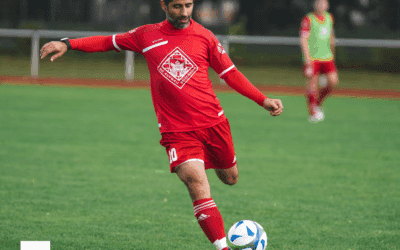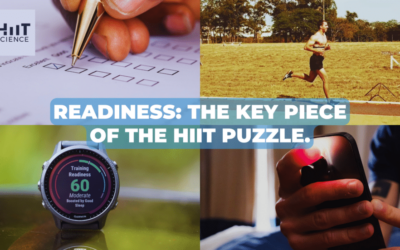First of all, I want to thank Martin for the invitation to contribute to HIIT Science. It’s a truly novel platform that’s going to help us learn and communicate within our discipline.
Sport Science has evolved into a field of many sub-disciplines. These have been broken down into very specific roles at the elite level of sport, with the overarching aim of enhancing performance and reducing the risk of injury to athletes. However, I feel that we sometimes get lost across this continuum of performance and injury prevention; a term I believe sets us up for failure. Can we really prevent all injuries from occurring?
As we work longer in our environments, our philosophies inevitably
evolve as we continually aim to optimise our athlete’s performance. I am a big believer in getting the most ‘BANG FOR YOUR BUCK’, whereby you work harder and smarter within your environment, using your time on the most effective outcome measures for success (however we each define success!). Hard work always underlines this, but we can sometimes get lost in channelling this hard work into off-route places.

For example, the volume of data and different variables we monitor will vary depending on our environment-specific Key Performance Indicators (KPI’s). Is there any point of having an expensive monitoring solution in place if the basic principles of training are not being applied in our practice? We are sometimes at fault ourselves because the environment we work in is constantly looking for the next big thing that answers all our questions. However, the best strategy forward is often reached by getting the fundamentals in place in the programme first. We need to maintain the ‘science’ aspect of our role and ensure that we are implementing critical analysis and thought into our methods to ensure we are providing the best service we can for the individual athlete, squad and coaching staff.
The critical question
I ask myself this: if I could go back 12 years in time, how would my young practitioner self, answer the following important industry-wide question illustrated in Figure 1:
“Hey Steve, please tell us where you tend to sit on the Performance Enhancement / Injury Prevention continuum”

Figure 1. The Performance Enhancement continuum. Where do you tend to sit?
If it was purely my personal viewpoint I had to consider at the time, I would sit very much towards the Performance Enhancement end of the spectrum on the left. Today however, my position on the continuum is one that has evolved, and would now best be described as adaptable. Before I delve into more detail on why that is the case, its noteworthy that my philosophy is shared by
many, and is supported in the scientific literature (5). Within team sports, where multiple games/competition periods occur over a short period of time, the objectives may slide across the continuum, depending on the aims of the training cycle.
Within football/soccer where I currently work, the league and level of competition often dictates where one sits on the continuum. Under the situation of a reduced squad size and large match volume, ensuring that you have your best players available for each game becomes the ultimate goal for the practitioner. However, is simply enabling players to be available for a game really helping the player perform at their best? Is it possible for a player to perform to their best in each of the 40-60 games of a season, where the ability actually to train for performance is minimal (4)? A sound underlying philosophy supported by an environmental needs-analysis (including the staff and athletes), may help inform where you sit on this continuum. To complicate matters further, your placement on the continuum may be different for an individual athlete and coach!
Specificity
Specificity is one of the underlying principles we should always keep hold of as practitioners. Whether that is being specific to the environment, the player, the athlete, the team, or the coaching staff, the way we communicate and present information must be explicit to the needs and KPI’s. For example, the technology boom over the last 10-20 years has changed our discipline dramatically. As a result, investment in technology needs to follow a logical process in order for it to be incorporated effectively within the environment (2). What variable is the technology we are investing in going to provide? Figure 2 shows the thought process I go through when assessing new available technology before incorporating it into my environment.

Figure 2. Progress chart to help decide if a variable is relevant/ useful within your sporting environment
Referring back to my previous comments, the more YES answers I get across these questions, the more the variable/ technology achieves my overarching ‘BANG FOR BUCK’ philosophy. This can be applied across multiple situations, including the choice of how you train and condition an athlete.
Developing a framework for testing/monitoring solutions using
Figure 2 can help inform what athletic qualities we require in order to be able to train effectively within our sport. While detail on testing protocols is beyond the scope of this blog piece, it’s important to appreciate that their value can help us as practitioners optimise and prescribe exercises relevant to the individual.
I am a big believer that we need to be specific to each individual wherever possible, and the prescription of exercise is no different. The use of HIIT exercise has been an effective way of getting buy in with players, specifically when individualising their runs in accordance with an individual’s maximal aerobic speed (MAS; (1)) or individual final velocity reached on the 30-15 intermittent fitness test (VIFT; (6)). For example, on an extensive conditioning day, where the aims of the session (from a physical perspective) may be to expose players to relatively high-speed sprints and repeated efforts, the design of the sessions and delivery of those sessions alongside colleagues (
Matt Busby, Hull City) can be made
specific to each individual within a team environment.
The ability to repeatedly perform ‘high intensity’ efforts within football/soccer (extensive or intensive in nature) has been identified as KPI’s of importance for performance (3). Educating the players on the how and why they perform specific exercises such as HIIT, can provide motivation to the player to improve, to the point where some players will request that they do their HIIT work on the appropriate training days as a top up.
As practitioners delivering sessions, we should be aiming to empower our players with information that allows them to become autonomous within their preparation, enabling them to prepare themselves optimally for performance. We as a discipline should be striving to consistently develop and educate our players and staff in this regard. Additionally, by appreciating each individual player, coach and staff member, and how they individually work, we can continue to evolve our understanding and philosophy of how best to promote performance AND reduce injury within the environment we work.
Steve Barret currently works as the Lead first team sport scientist at Hull City Football Club. Alongside completion of his BSc, MSc and PhD he has worked in elite sport for over 12 years, including work with the England Women national team age groups and Scunthorpe United. Twitter @stevebarrett5 (
https://twitter.com/stevebarrett5?lang=en), researchgate (
https://www.researchgate.net/profile/Stephen_Barrett4)
 References
References
- Buchheit M and Laursen PB. High-intensity interval training, solutions to the programming puzzle: Part I: cardiopulmonary emphasis. Sports Med 43: 313-338, 2013.
- Buchheit M and Simpson BM. Player-Tracking Technology: Half-Full or Half-Empty Glass? Int J Sports Physiol Perform 12: S235-S241, 2017.
- Carling C, Le Gall F, and Dupont G. Analysis of repeated high-intensity running performance in professional soccer. J Sports Sci 30: 325-336, 2012.
- Carling C, Le Gall F, and Dupont G. Are physical performance and injury risk in a professional soccer team in match-play affected over a prolonged period of fixture congestion? Int J Sports Med 33: 36-42, 2012.
- Gabbett TJ and Whiteley R. Two Training-Load Paradoxes: Can We Work Harder and Smarter, Can Physical Preparation and Medical Be Teammates? Int J Sports Physiol Perform 12: S250-S254, 2017.
- Scott TJ, Duthie GM, Delaney JA, Sanctuary CE, Ballard DA, Hickmans JA, and Dascombe BJ. The Validity and Contributing Physiological Factors to 30-15 Intermittent Fitness Test Performance in Rugby League. J Strength Cond Res 31: 2409-2416, 2017.
 For example, the volume of data and different variables we monitor will vary depending on our environment-specific Key Performance Indicators (KPI’s). Is there any point of having an expensive monitoring solution in place if the basic principles of training are not being applied in our practice? We are sometimes at fault ourselves because the environment we work in is constantly looking for the next big thing that answers all our questions. However, the best strategy forward is often reached by getting the fundamentals in place in the programme first. We need to maintain the ‘science’ aspect of our role and ensure that we are implementing critical analysis and thought into our methods to ensure we are providing the best service we can for the individual athlete, squad and coaching staff.
The critical question
I ask myself this: if I could go back 12 years in time, how would my young practitioner self, answer the following important industry-wide question illustrated in Figure 1:
For example, the volume of data and different variables we monitor will vary depending on our environment-specific Key Performance Indicators (KPI’s). Is there any point of having an expensive monitoring solution in place if the basic principles of training are not being applied in our practice? We are sometimes at fault ourselves because the environment we work in is constantly looking for the next big thing that answers all our questions. However, the best strategy forward is often reached by getting the fundamentals in place in the programme first. We need to maintain the ‘science’ aspect of our role and ensure that we are implementing critical analysis and thought into our methods to ensure we are providing the best service we can for the individual athlete, squad and coaching staff.
The critical question
I ask myself this: if I could go back 12 years in time, how would my young practitioner self, answer the following important industry-wide question illustrated in Figure 1:


 References
References







